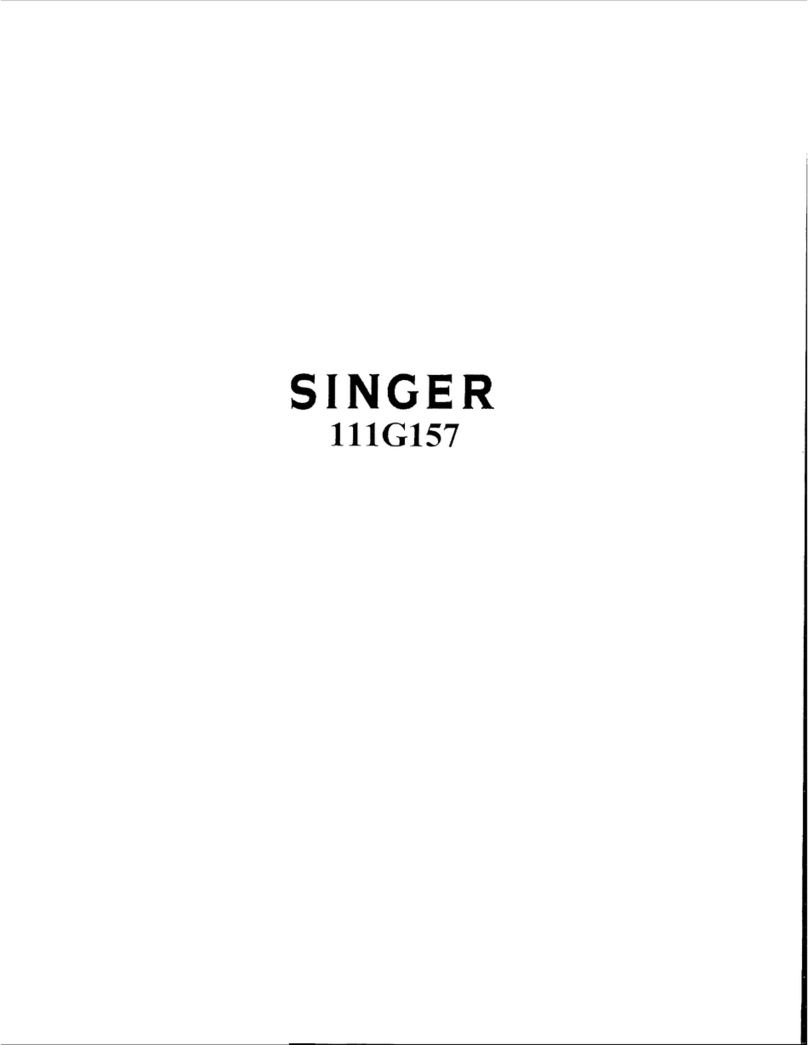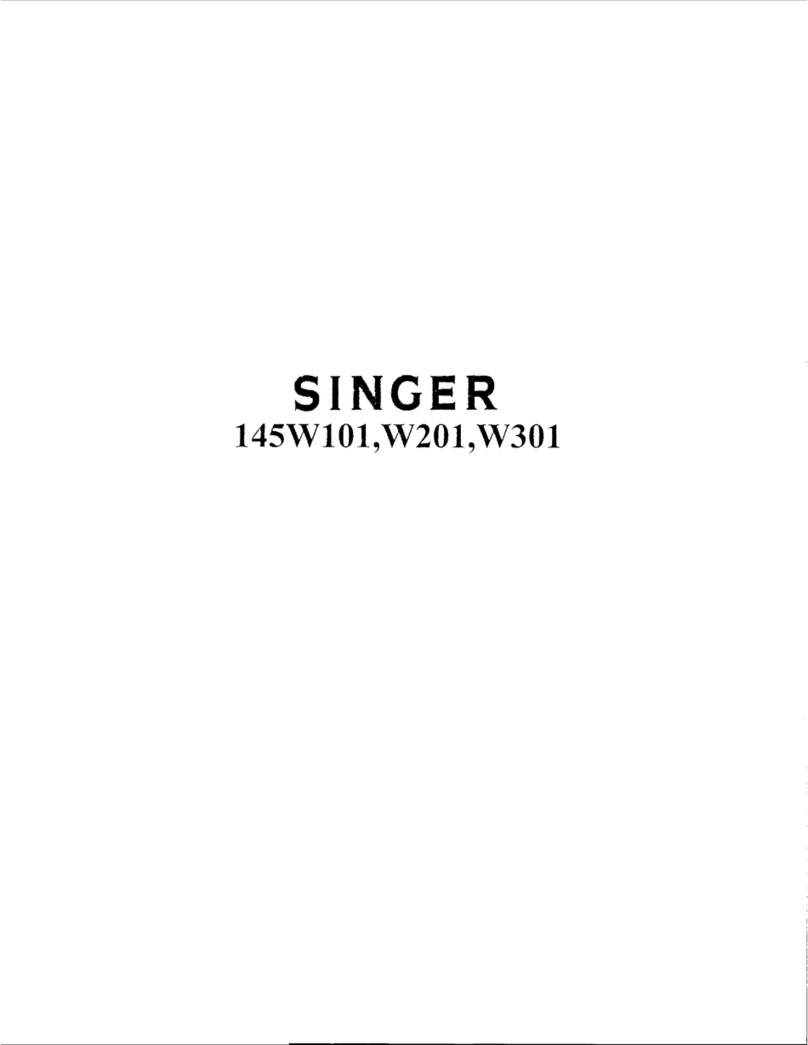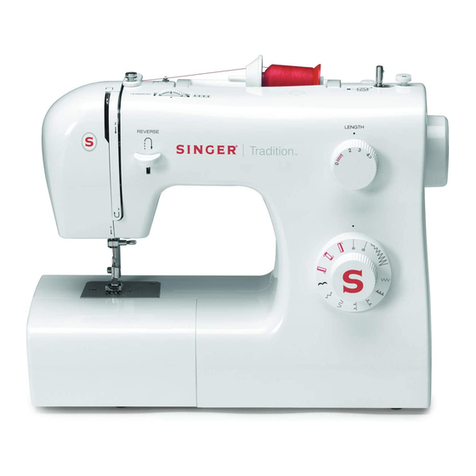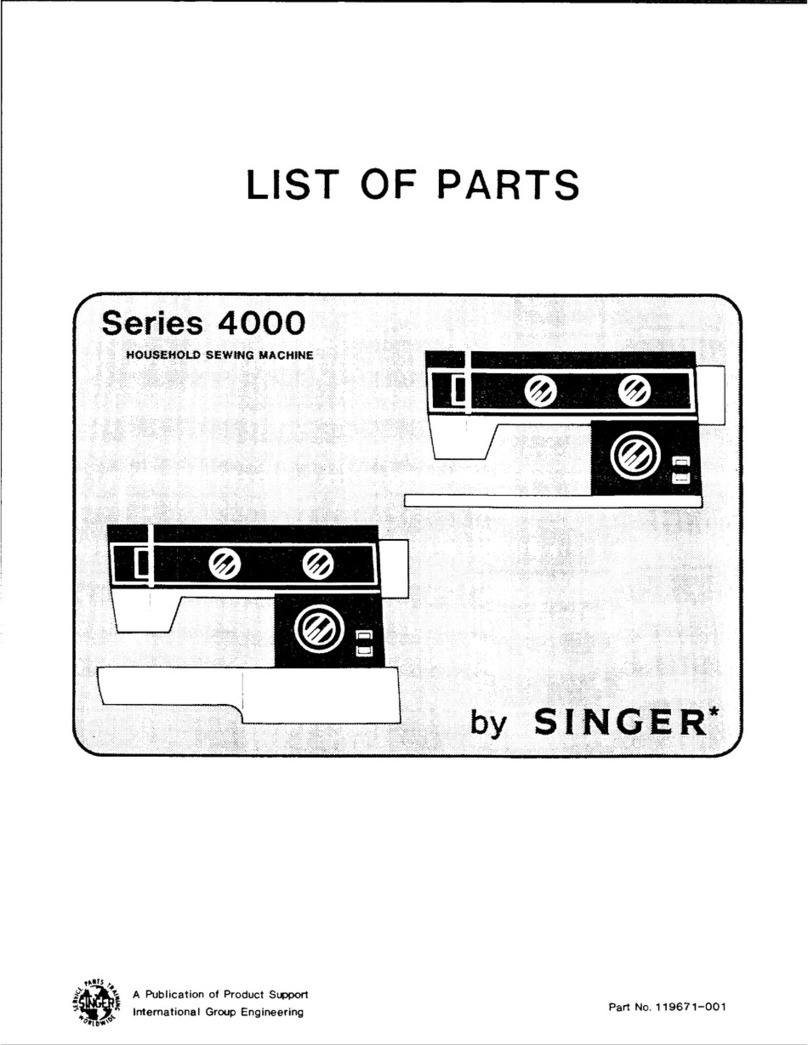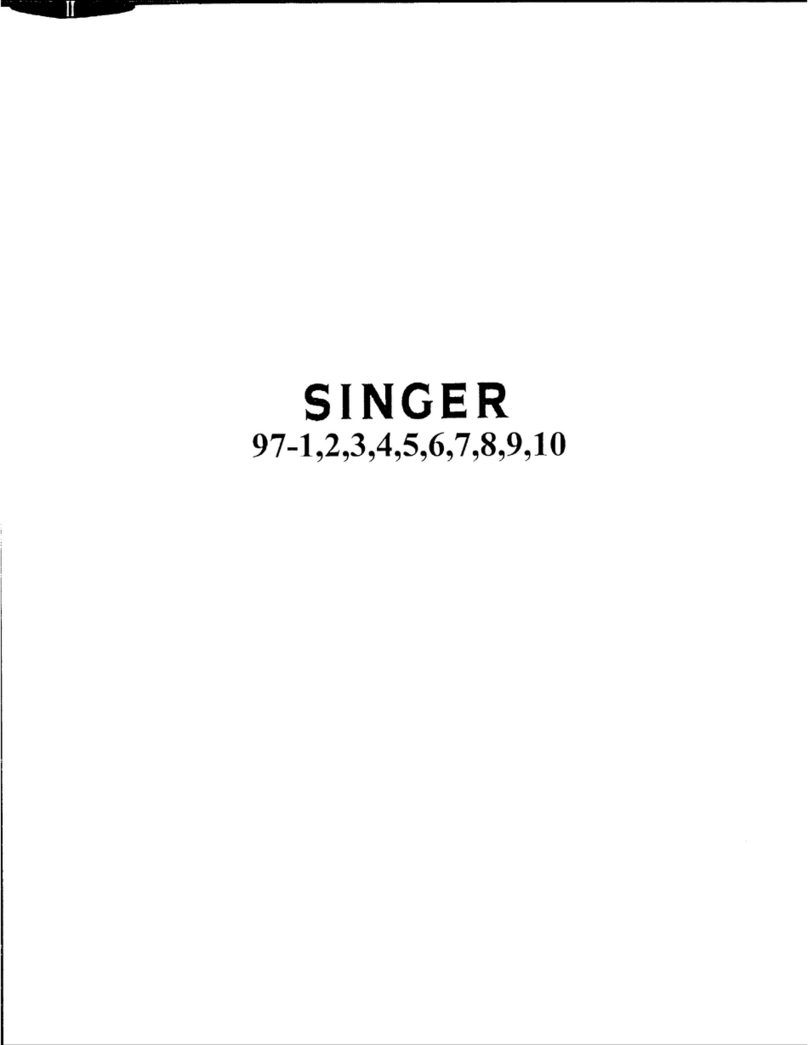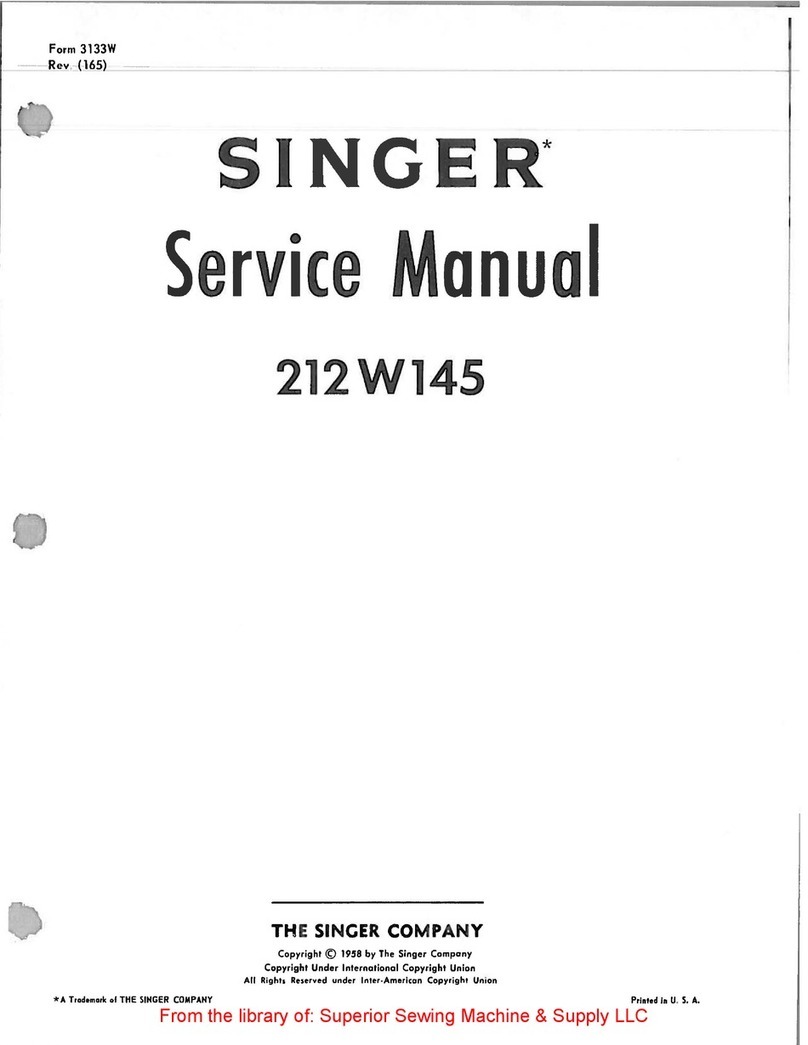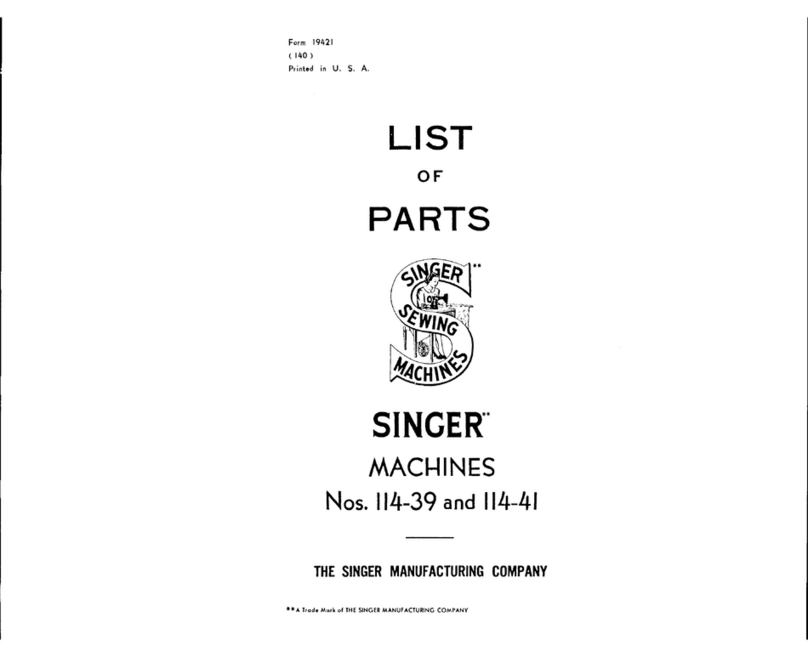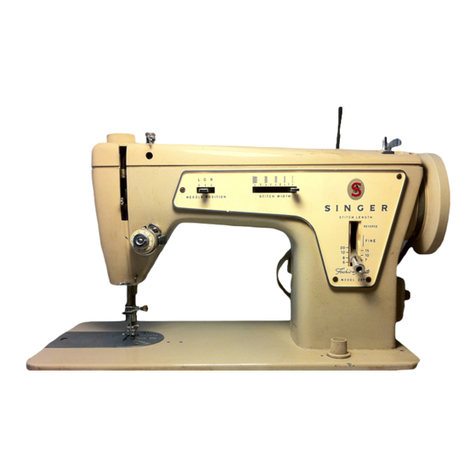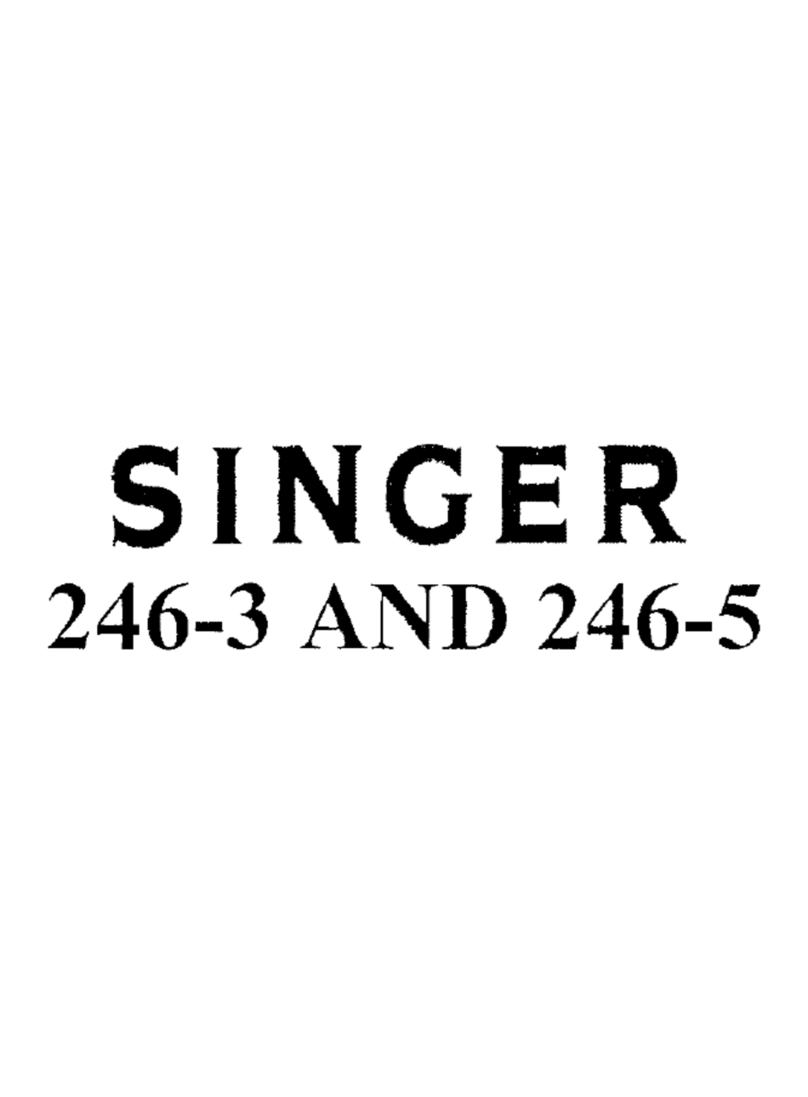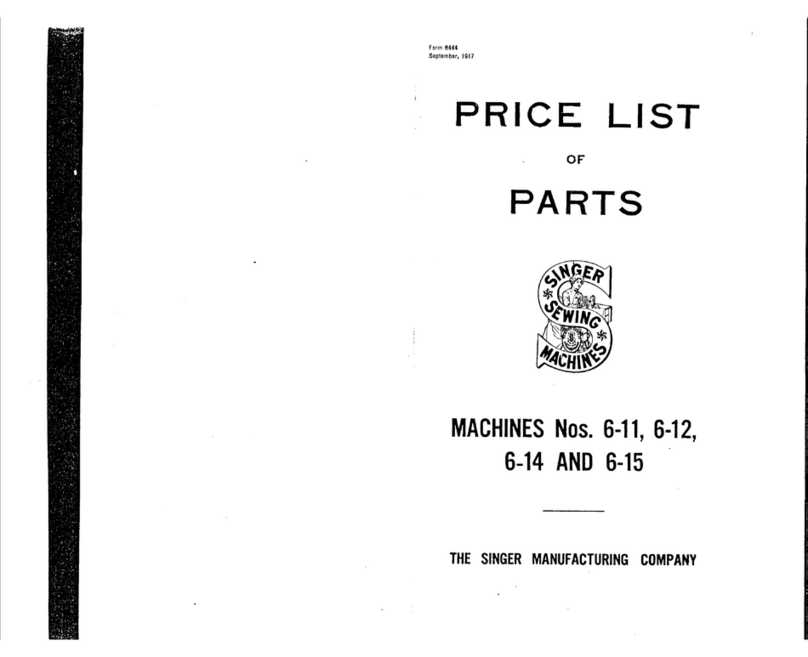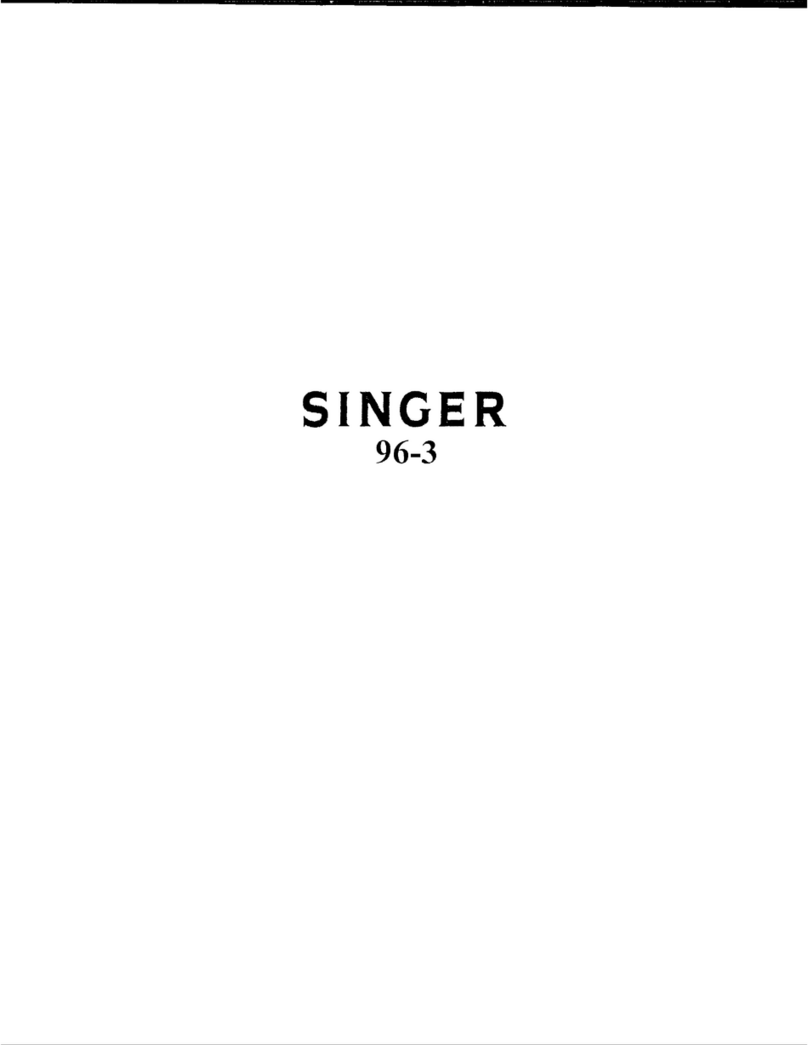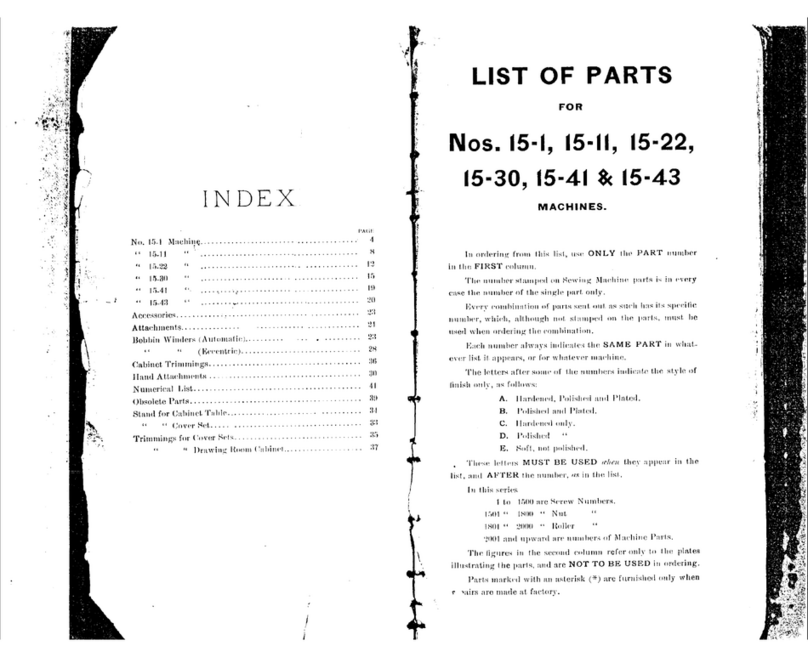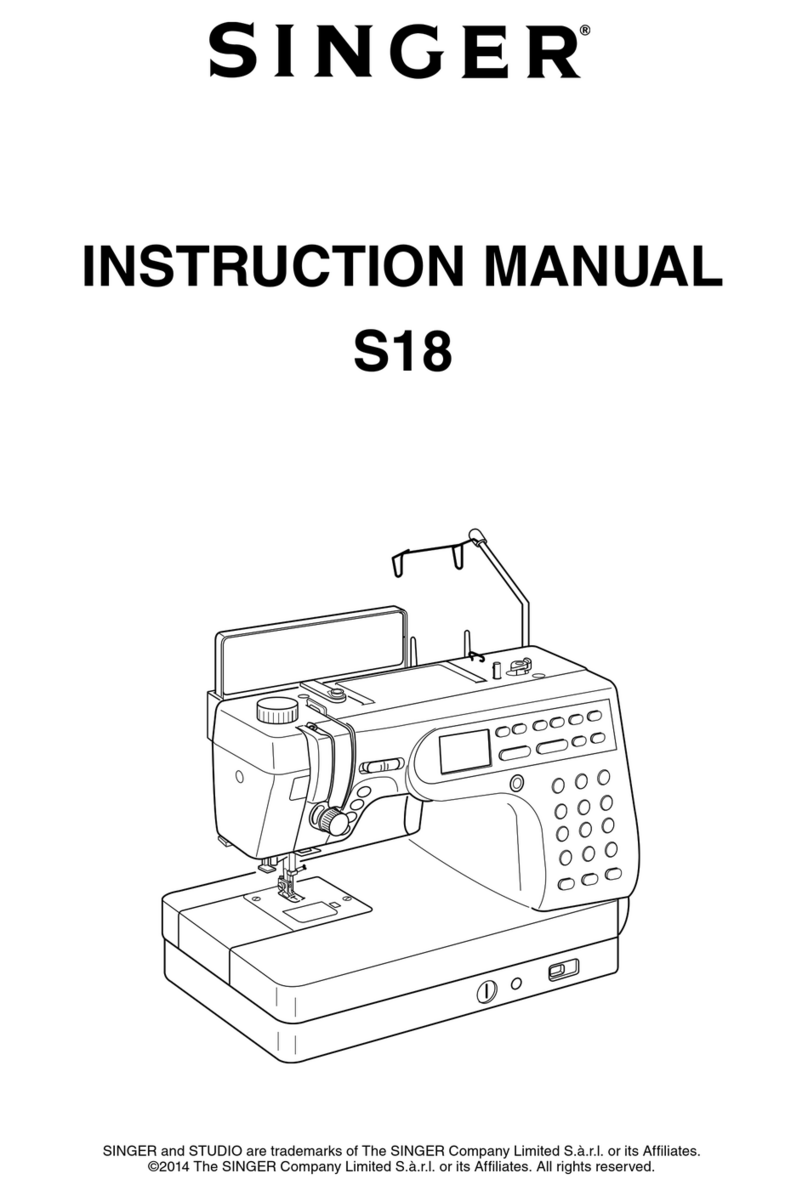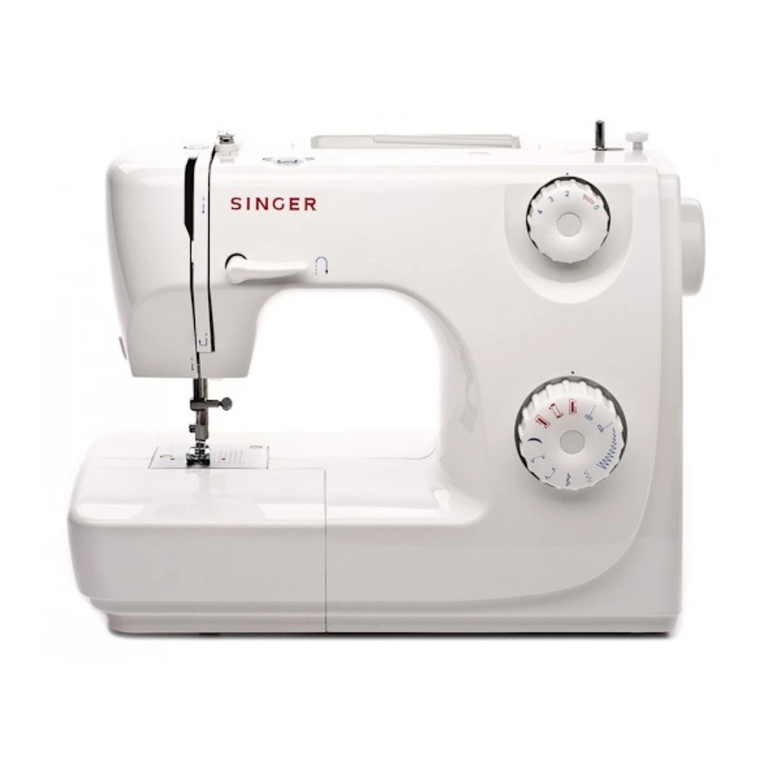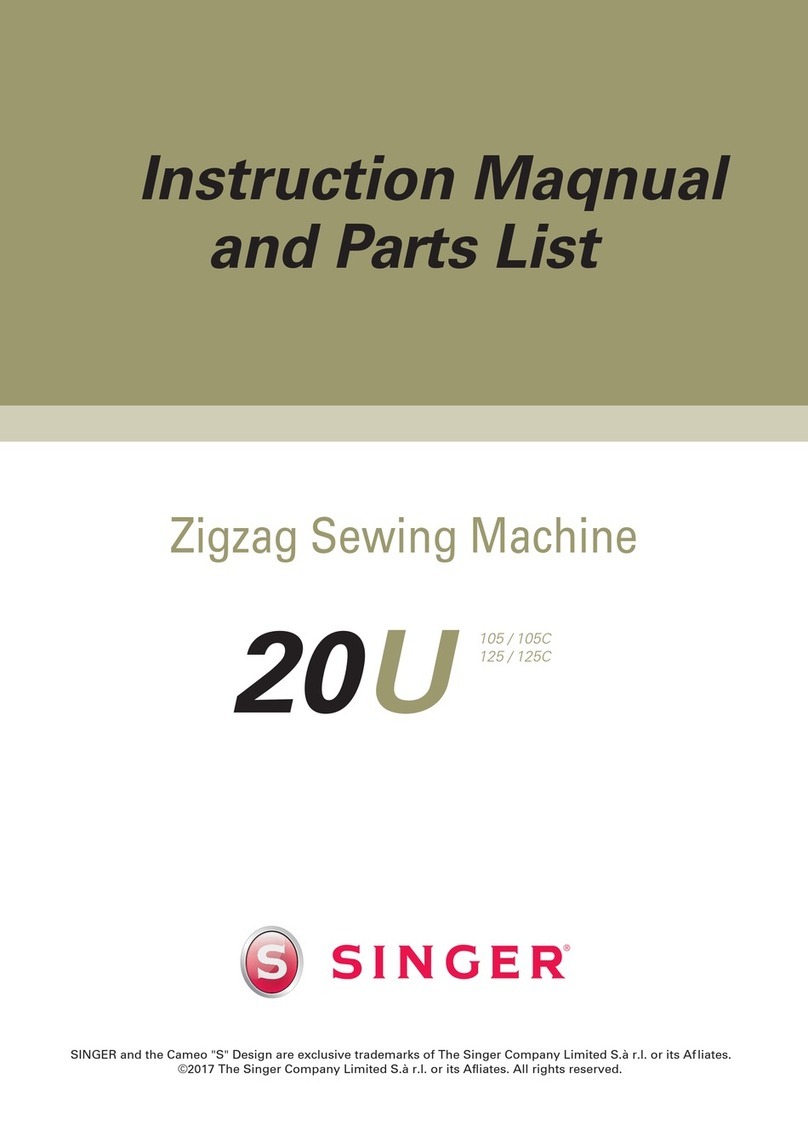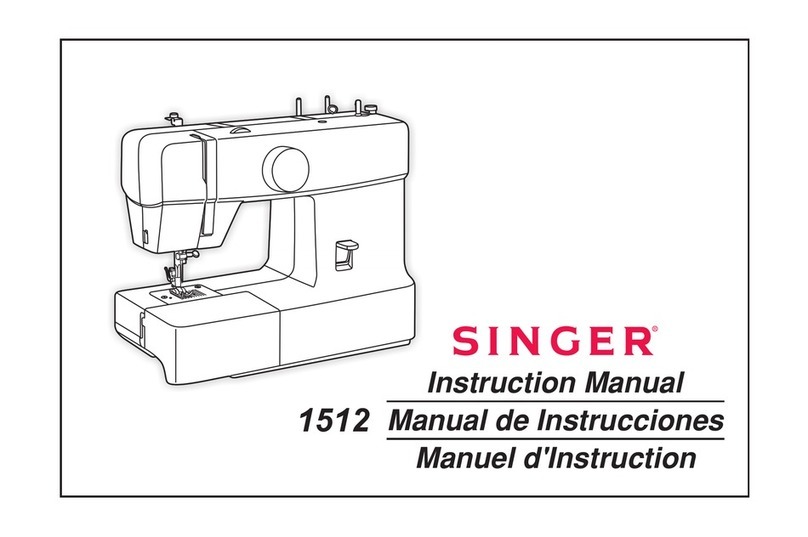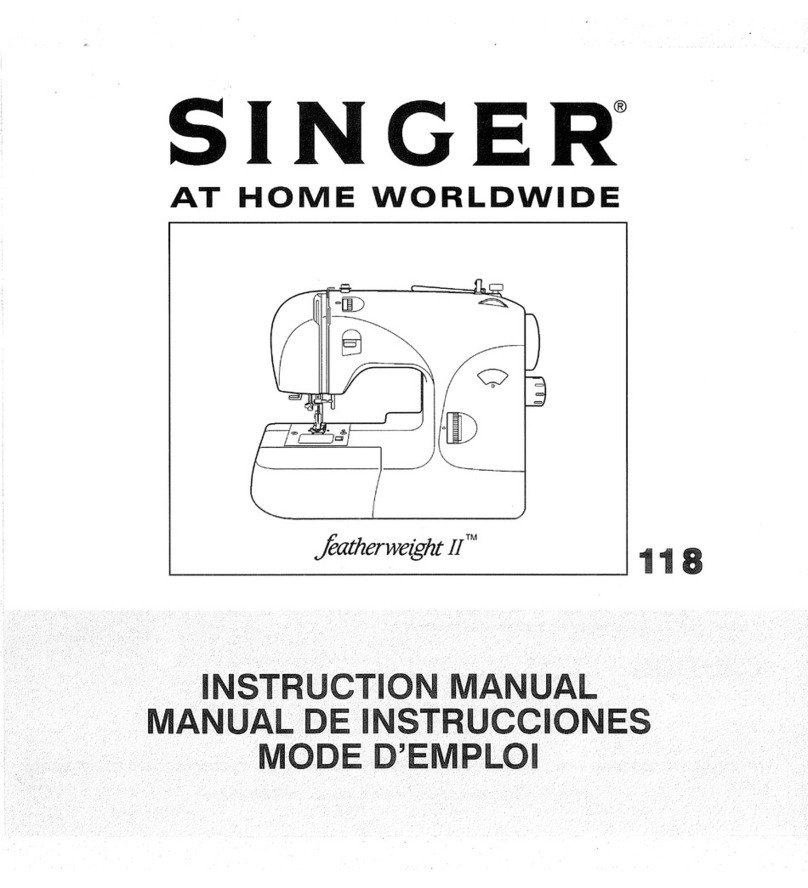CONTENTS
Page
1. Getting to Know Your Machine ............................................................................................................................ 1
Principal Parts and What The Do.................................................................................................................... 1
Accessories............................................................................................................................................................ 2
2. Getting Read to Sew............................................................................................................................................... 6
Needles .................................................................................................................................................................. 6
Operating Machine ............................................................................................................................................... 7
Choosing Needle and Thread............................................................................................................................... 8
Threading the Machine......................................................................................................................................... 9
Threading the Needle • Winding the Bobbin
Changing the Bobbin.......................................................................................................................................... 12
3. Tips on Straight Stitching ..................................................................................................................................... 14
Adjusting Machine to Your Fabric .................................................................................................................... 14
Setting Controls • Regulating Pressure • Regulating Needle-thread Tension • Setting
Stitch Length
Sewing a Seam.................................................................................................................................................... 16
4. All About Zig-Zag Stitching................................................................................................................................... 20
How Stitches Are Produced .............................................................................................................................. 20
Setting Pattern Selector • Adjusting Stitch Placement • Adjusting Stitch Width • Adjusting
Needle-thread Tension • Adjusting Stitch Length
Finding the Beginning of a Pattern Unit .......................................................................................................... 23
Adjusting Stitch Balance When Using Flexi-Stitch Patterns
...........................................................................
23
Interchangeable Fash/on and F/ex/-Sf/fc/7 Discs .......................................................................................... 24
5. Twin-Needle Stitching............................................................................................................................................ 26
6. Temporar Stitching............................................................................................................................................... 28
7. Buttons and Buttonholes ..................................................................................................................................... 34
Buttons ................................................................................................................................................................ 34
Buttonholes .................................................................................................................................................... 35
8. Sewing the Professional Wa ............................................................................................................................... 41
Construction Details ......................................................................................................................................... 41
Zippers • Corded Seams • Blindstitch Hems • Darts
Sewing Knit and Stretch Fabric......................................................................................................................... 44
Stretch Stitch Chart • Starting to Sew Using a Flexi-Stitch Pattern • Guiding and Supporting
Fabric • Adjusting Pressure • Plain Stretch Seams • Maxi-Topstitching • Overedged
Seams • Mock Overedging • Finishes for Hems and Facings
Handling Special Fabrics................................................................................................................................... 50
Fabric-Handling Table • The Even Feed foot
Decorative Touches
..............
............................................................................................................................ 54
Satin Stitching • Applique • Free-Motion Embroider • Hesitation Embroider •
Topstitching
Keeping Up Appearances ................................................................................................................................. 58
Darning • Mending • Replacing Lingerie Elastic • Stitch Centering
9. Free-Arm Sewing .................................................................................................................................................. 61
Your Personal Measurements .......................................................................................................................... 65
10. Caring for Your Sewing Machine.......................................................................................................................... 66
11. Sewing Aids ........................................................................................................................................................... 69
Index................................................................................................................................................................................ 70
Instrukcje obsługi maszyn do szycia firm Polskich jak i zagranicznych np. Singer Toyota Pfaff Gritzner Łucznik rka
maszynykrawieckie.shophurt.pl
